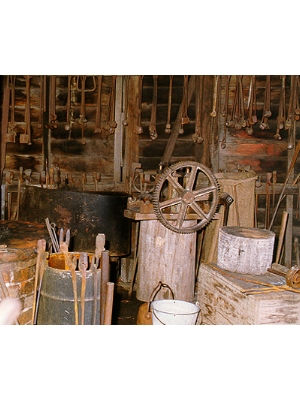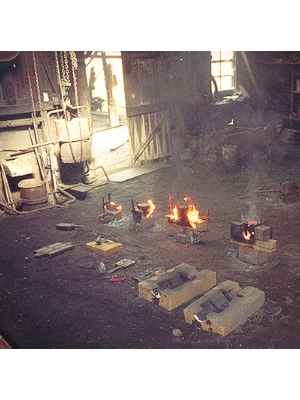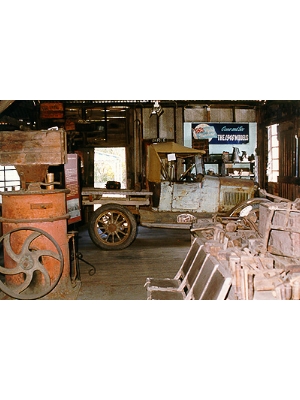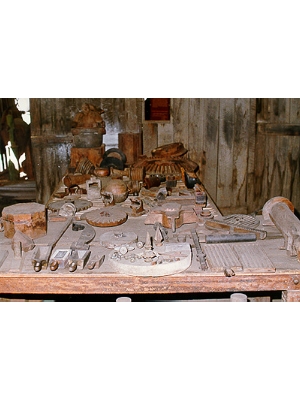The forge is in constant use by our blacksmith, we gather the charcoal locally.
New England Brass and Iron Lace Foundry Museum
Established in 1872, this is the oldest operating foundry in Australia. It is famous for its production of iron lace, ornamental and other castings. It also has an extensive collection of cedar patterns and early blacksmiths' and founders' tools. The entire foundry is in original working condition and is a fascinating industrial relic.
Subject:
Items
Forge
Blacksmiths Shop

Pouring Floor
Pouring Floor

The area where sand moulds are made, dried in core oven and then poured with molten metal.
Overhead Gear
Overhead Gear

Steam engine removed when electricity came to Uralla 1938. Taken away to "Kingston Station", brought back to foundry in 1952 and melted down for scrap. All of the museums machines still work off overhead gear.
Delivery Vehicle
Willy's Overland 1924

The back of the car was cut off (still here) to turn it into a utility and therefore a commercial vehicle. This meant that they did not have to pay fuel excise imposed after WWI.
Cedar Patterns
Cedar Patterns

These hand carved patterns were made in the foundry by 5 full-time pattern makers (master craftsmen) employed 1872-1900
